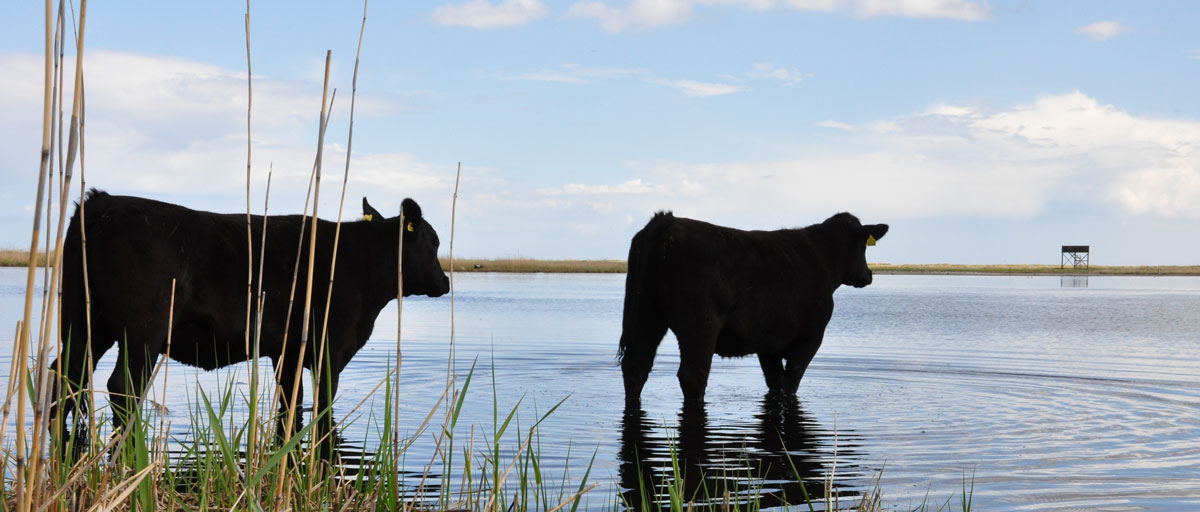
The area around the Helge å river in Southern Sweden is one of Sweden's most productive agricultural areas, but also highly susceptible to flooding. A new study has identified a variety of responses in moments of change and crises. Photo: Å. Pearce/Biosfärkontoret
Landscape management
Then came the flood
New method can help clarify agricultural responses to crises
- Study identifies a variety of responses in moments of change and crises by farmers around the Helge å river in Southern Sweden
- Coping strategies included using savings to buy extra fodder, using unaffected land to grow winter fodder and simply have the energy to pull through
- The different strategies reveal not only a deeper understanding of how the farmers deal with crises, but also provide an estimate of the resilience of a context-specific social-ecological system
When it comes to dealing with changes and disturbances such as drought, flooding and soaring fuel prices, few sectors are as vulnerable as the agricultural sector.
In a recently published book on the resilience of cultural landscapes centre researchers Magnus Tuvendal and Thomas Elmqvist present a new method which assesses response strategies made by stakeholders.
A much troubled summer
Studying farmers around the Helge å river in Southern Sweden, Tuvendal and Elmqvist identified a variety of responses in moments of change and crises. These responses were then classified into three distinct strategies: coping, adaptation and transformation strategies.
"The area around the river is one of Sweden's most productive agricultural areas, but also highly susceptible to flooding. In the summer of 2007, the water table in the river was extremely high, in fact the highest since data collection began in 1905," Tuvendal explains.
The meadows were flooded before hay could be harvested. Some of the animals grazing on the meadows could move to higher ground by themselves, but others were cut off by the water and had to be evacuated under dramatic circumstances. The reduced grazing and harvest of hay forced some farmers to buy supplemental fodder. The average slaughter weight of the animal also went down meaning fewer animals being ready for slaughter.
Another serious problem was parasitic infections as the animals were evacuated from the flood to a more forested area where ticks were abundant. One farmer lost 15 of his cows "despite watching them around the clock..."
Coping, adapting or transforming?
So what were the farmers' response to the crisis and how could they deal with similar challenges in the future?
Coping strategies (when you rely on existing behaviour and the resources at hand) included using savings to buy extra fodder, using unaffected land to grow winter fodder and simply have the energy to pull through.
Some could cope thanks to a more diversified income stream or lower costs than others. As for adaptation strategies (when you change behaviour and add new resources), the farmers stressed the importance of being more observant of signals in nature, considering opportunities to use neighbouring land for grazing and possibly reducing the number of livestock, although the latter was less likely because "high pressure of grazing is essential to maintain good quality grazing."
One transformation strategy (when you redefine your goals or identity) was the scenario of leaving the seasonally flooded meadows entirely. This was indicated when farmers were asked to imagine more frequent summers similar to the one in 2007. The scenario, according to the farmers, was plausible when considering increased flooding and poorer grass quality.
Measuring resilience
Tuvendal and Elmqvist argue that the different strategies reveal not only a deeper understanding of how the farmers deal with crises, but also provide an estimate of the resilience of a context-specific social-ecological system.
"Coping, adaptation and transformation strategies are all pursued by stakeholders in order to avoid a forced change. An assessment of chosen strategies can be valuable because it provides managers and other actors with an estimate of the resilience of their own landscape and resources. Knowledge about the appropriateness, feasibility and efficiency of a given strategy will help making sensible decisions." says Magnus Tuvendal.






